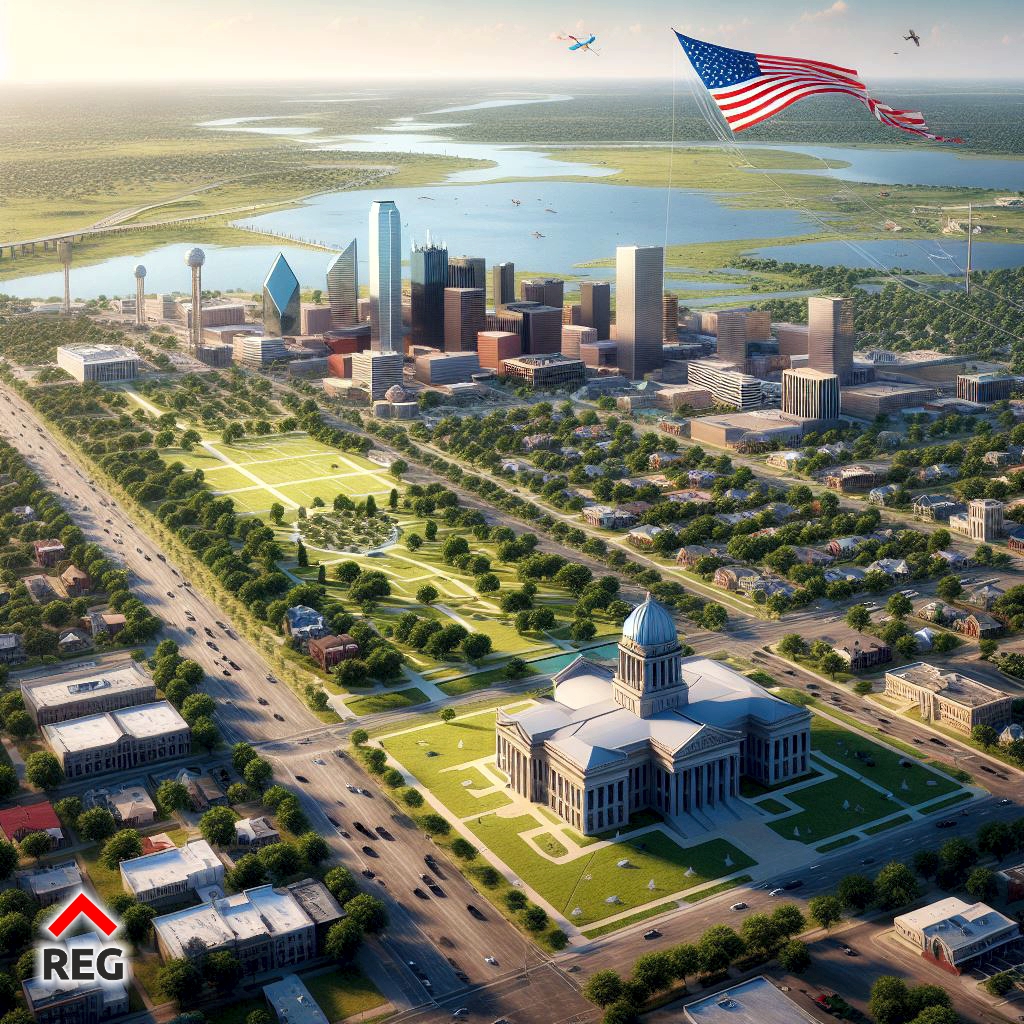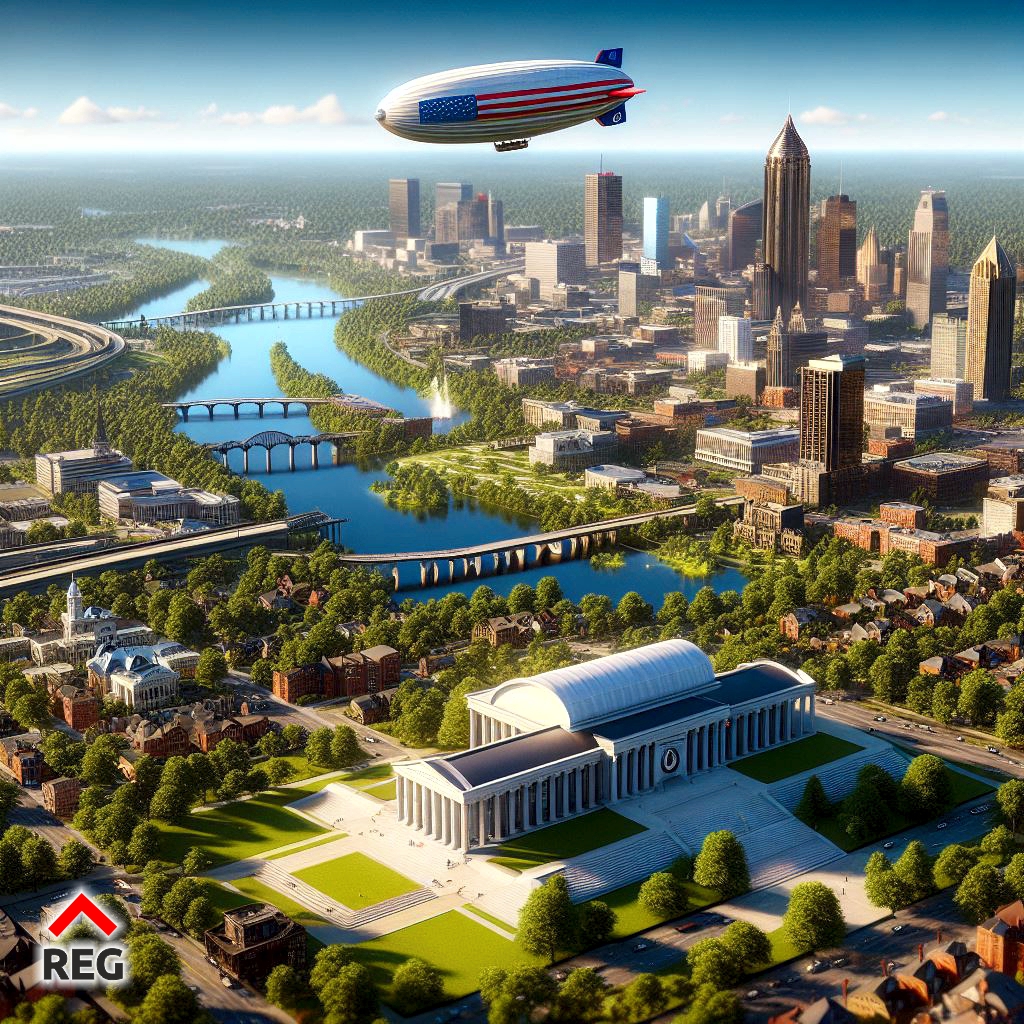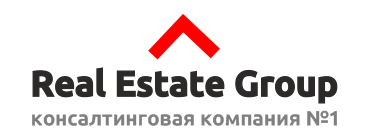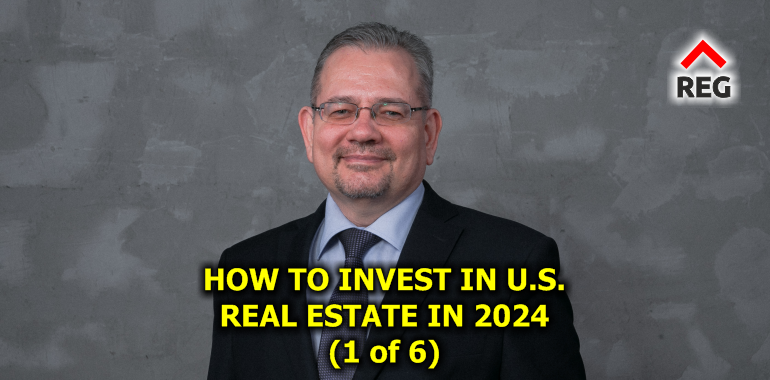YouTube
Podcasts
MAVE | Apple Podcasts | Google Podcasts | Spotify |Яндекс Музыка | VK | SoundStream | Deezer | Castbox | Overcast | Pocket Casts | Podcast Addict
Want to buy real estate in the USA? Write to us on WhatsApp and Real Estate Group will find the best options for you. Everyone buys from us!
Introduction:
Real estate investing is one of the most rewarding and lucrative ways to build wealth and achieve financial freedom. Real estate offers multiple benefits, such as income, appreciation, tax advantages, leverage, and diversification. However, not all real estate investments are created equal. Depending on your goals, budget, risk tolerance, and time horizon, you may prefer different strategies to maximize your returns.
In this article, Real Estate Group will compare and contrast two common real estate investment strategies: buying and flipping, and buying and holding. We will explain how each strategy works, what are the pros and cons, and what are the best markets and criteria for each strategy in 2024. We will also provide some examples and case studies to illustrate the potential outcomes of each strategy.
Buying and flipping is a strategy that involves purchasing a property that is undervalued, distressed, or in need of repairs, renovating it to increase its value, and selling it for a profit within a short period of time. This strategy requires a lot of capital, skills, and market knowledge, but it can generate quick and high returns if done correctly.
Buying and holding is a strategy that involves purchasing a property that is in a good location, has a positive cash flow, and has a potential for appreciation, renovating it to improve its condition and rentability, and holding it for a long period of time. This strategy requires less capital, skills, and market knowledge, but it can generate steady and passive income, tax benefits, and long-term wealth if done correctly.
Which strategy is more profitable in the short and long term? The answer depends on many factors, such as the market conditions, the property characteristics, the financing options, the renovation costs, the holding costs, the selling costs, the taxes, and the personal preferences of the investor. There is no one-size-fits-all answer, but there are some general guidelines and best practices that can help you make an informed decision.
In the following sections, Real Estate Group will dive deeper into each strategy and provide you with the tools and tips you need to succeed in real estate investing in 2024. Whether you are a beginner or an expert, a flipper or a holder, a cash buyer or a leveraged investor, you will find something valuable and useful in this article. Let’s get started!
Chapter 1: The Top 10 U.S. Cities for Real Estate Investing in 2024
In this chapter, Real Estate Group will explore the top 10 U.S. cities for real estate investing in 2024, based on various criteria such as population growth, gross rental yield, vacancy rate, housing price index, median home sold price, and market trends. We will also compare and contrast the two strategies of buying and flipping, and buying and holding, and provide some suggestions on the best neighborhoods for each strategy within each city.
The top 10 U.S. cities for real estate investing in 2024 are:
- Nashville, Tennessee
- Phoenix, Arizona
- Dallas/Fort Worth, Texas
- Atlanta, Georgia
- Austin, Texas
- San Diego, California
- Boston, Massachusetts
- Burlington, Vermont
- Portland, Maine
- Ithaca, New York
Let’s take a closer look at each city and see why they are attractive for real estate investors.
Nashville, Tennessee

Nashville is the capital and largest city of Tennessee, with a population of over 1.9 million people in the metropolitan area. It is also one of the fastest-growing cities in the U.S., with a population growth rate of 11.6% from 2010 to 2020. Nashville has a strong and diverse economy, with sectors such as health care, music, tourism, education, and manufacturing. It also has a low cost of living, high quality of life, and a vibrant culture.
Nashville’s real estate market is booming, with a housing price index growth of 83.4% from 2015 to 2020. The median home sold price in Nashville was $385,000 in 2020, which is below the U.S. average of $430,300. The gross rental yield in Nashville was 8.2% in 2020, which is above the ideal threshold of 7%. The vacancy rate in Nashville was 6.9% in 2020, which is within the healthy range of 5% to 10%.
For investors who are interested in buying and flipping, Nashville offers many opportunities to find undervalued, distressed, or outdated properties that can be renovated and sold for a profit. Some of the best neighborhoods for buying and flipping in Nashville are:
East Nashville: This is a trendy and hip neighborhood that attracts young professionals, artists, and musicians. It has a mix of historic and modern homes, as well as many bars, restaurants, and shops. The median home sold price in East Nashville was $425,000 in 2020, which is higher than the city average. However, there are still some bargains to be found, especially in the areas of Inglewood and Rosebank, where the median home sold price was $325,000 and $310,000, respectively.
Antioch: This is a suburban area that is located about 12 miles southeast of downtown Nashville. It has a diverse and growing population, as well as many amenities such as parks, schools, and shopping centers. The median home sold price in Antioch was $265,000 in 2020, which is lower than the city average. There are many older homes that can be updated and improved, as well as some new developments that can be purchased at a discount.
Madison: This is a historic and affordable neighborhood that is located about 8 miles north of downtown Nashville. It has a variety of homes, ranging from cottages and bungalows to ranches and townhouses. The median home sold price in Madison was $250,000 in 2020, which is lower than the city average. There are many properties that can be renovated and sold for a profit, especially in the areas of Neelys Bend and Rivergate, where the median home sold price was $230,000 and $215,000, respectively.
For investors who are interested in buying and holding, Nashville offers many opportunities to find properties that have a positive cash flow, a potential for appreciation, and a high demand for rentals. Some of the best neighborhoods for buying and holding in Nashville are:
Downtown Nashville: This is the heart and soul of the city, where the famous Music Row, Broadway, and the Country Music Hall of Fame are located. It has a high concentration of hotels, offices, entertainment venues, and cultural attractions. The median home sold price in downtown Nashville was $505,000 in 2020, which is higher than the city average. However, the rental demand is also high, especially for short-term rentals that cater to tourists and business travelers. The average rent in downtown Nashville was $1,850 per month in 2020, which translates to a gross rental yield of 4.4%.
Germantown: This is a historic and charming neighborhood that is located about 2 miles north of downtown Nashville. It has a mix of old and new homes, as well as many restaurants, cafes, and shops. The median home sold price in Germantown was $615,000 in 2020, which is higher than the city average. However, the rental demand is also high, especially for long-term rentals that attract young professionals, families, and students. The average rent in Germantown was $2,100 per month in 2020, which translates to a gross rental yield of 4.1%.
Bellevue: This is a suburban and family-friendly neighborhood that is located about 13 miles southwest of downtown Nashville. It has a lot of green space, such as parks, trails, and golf courses, as well as many amenities such as schools, libraries, and shopping centers. The median home sold price in Bellevue was $375,000 in 2020, which is lower than the city average. The rental demand is also high, especially for long-term rentals that attract families, retirees, and commuters. The average rent in Bellevue was $1,500 per month in 2020, which translates to a gross rental yield of 4.8%.
Phoenix, Arizona

Phoenix is the capital and largest city of Arizona, with a population of over 4.9 million people in the metropolitan area. It is also one of the fastest-growing cities in the U.S., with a population growth rate of 16.3% from 2010 to 2020. Phoenix has a booming and diversified economy, with sectors such as technology, health care, manufacturing, and tourism. It also has a favorable climate, with sunny and warm weather throughout the year.
Phoenix’s real estate market is hot, with a housing price index growth of 72.9% from 2015 to 2020. The median home sold price in Phoenix was $335,000 in 2020, which is below the U.S. average of $430,300. The gross rental yield in Phoenix was 7.1% in 2020, which is above the ideal threshold of 7%. The vacancy rate in Phoenix was 5.6% in 2020, which is within the healthy range of 5% to 10%.
For investors who are interested in buying and flipping, Phoenix offers many opportunities to find properties that are in high demand, have a low inventory, and have a fast appreciation rate. Some of the best neighborhoods for buying and flipping in Phoenix are:
Central Phoenix: This is the core and historic area of the city, where the downtown, midtown, and uptown districts are located. It has a variety of homes, from condos and townhouses to single-family and multi-family homes. The median home sold price in central Phoenix was $375,000 in 2020, which is higher than the city average. However, there are still some properties that can be purchased at a bargain, renovated, and sold for a profit, especially in the areas of Encanto, Coronado, and Willo, where the median home sold price was $325,000, $300,000, and $295,000, respectively.
South Phoenix: This is an emerging and affordable area of the city, where the South Mountain Park, the largest municipal park in the U.S., is located. It has a mix of new and old homes, as well as many amenities such as schools, hospitals, and shopping centers. The median home sold price in south Phoenix was $265,000 in 2020, which is lower than the city average. There are many properties that can be upgraded and improved, as well as some new developments that can be purchased at a discount.
North Phoenix: This is a suburban and upscale area of the city, where the Desert Ridge, Paradise Valley, and Scottsdale districts are located. It has a lot of luxury and custom homes, as well as many golf courses, resorts, and spas. The median home sold price in north Phoenix was $450,000 in 2020, which is higher than the city average. There are some properties that can be renovated and sold for a premium, especially in the areas of Moon Valley, Tatum Ranch, and Desert Hills, where the median home sold price was $400,000, $375,000, and $350,000, respectively.
For investors who are interested in buying and holding, Phoenix offers many opportunities to find properties that have a high rental demand, a low vacancy rate, and a stable income. Some of the best neighborhoods for buying and holding in Phoenix are:
Downtown Phoenix: This is the business and cultural center of the city, where the Arizona State University, the Phoenix Convention Center, and the Chase Field are located. It has a lot of high-rise and mid-rise condos, lofts, and apartments, as well as some historic homes and buildings. The median home sold price in downtown Phoenix was $325,000 in 2020, which is lower than the city average. The rental demand is also high, especially for short-term rentals that cater to students, professionals, and tourists. The average rent in downtown Phoenix was $1,650 per month in 2020, which translates to a gross rental yield of 6.1%.
Arcadia: This is a prestigious and scenic neighborhood that is located about 8 miles east of downtown Phoenix. It has a lot of ranch-style and custom homes, as well as some condos and townhouses, that are surrounded by lush landscaping, citrus groves, and mountain views. The median home sold price in Arcadia was $750,000 in 2020, which is higher than the city average. The rental demand is also high, especially for long-term rentals that attract families, executives, and celebrities. The average rent in Arcadia was $2,500 per month in 2020, which translates to a gross rental yield of 4%.
Ahwatukee: This is a suburban and family-oriented neighborhood that is located about 15 miles south of downtown Phoenix. It has a lot of single-family and multi-family homes, as well as some golf course and lakefront properties, that are nestled in the foothills of the South Mountain. The median home sold price in Ahwatukee was $400,000 in 2020, which is higher than the city average. The rental demand is also high, especially for long-term rentals that attract families, retirees, and outdoor enthusiasts. The average rent in Ahwatukee was $1,800 per month in 2020, which translates to a gross rental yield of 5.4%.
Dallas/Fort Worth, Texas

Dallas/Fort Worth is the largest metropolitan area in Texas, with a population of over 7.5 million people. It is also one of the fastest-growing metropolitan areas in the U.S., with a population growth rate of 19.4% from 2010 to 2020. Dallas/Fort Worth has a booming and diversified economy, with sectors such as technology, finance, energy, health care, and aerospace. It also has a low cost of living, a high quality of life, and a rich culture.
Dallas/Fort Worth’s real estate market is strong, with a housing price index growth of 54.4% from 2015 to 2020. The median home sold price in Dallas/Fort Worth was $325,000 in 2020, which is below the U.S. average of $430,300. The gross rental yield in Dallas/Fort Worth was 7.5% in 2020, which is above the ideal threshold of 7%. The vacancy rate in Dallas/Fort Worth was 6.4% in 2020, which is within the healthy range of 5% to 10%.
For investors who are interested in buying and flipping, Dallas/Fort Worth offers many opportunities to find properties that are in high demand, have a low inventory, and have a moderate appreciation rate. Some of the best neighborhoods for buying and flipping in Dallas/Fort Worth are:
Oak Cliff: This is a historic and diverse neighborhood that is located about 4 miles southwest of downtown Dallas. It has a mix of old and new homes, from Tudors and Craftsman to modern and contemporary. The median home sold price in Oak Cliff was $275,000 in 2020, which is lower than the city average. However, there are still some properties that can be purchased at a bargain, renovated, and sold for a profit, especially in the areas of Bishop Arts District, Kessler Park, and Winnetka Heights, where the median home sold price was $325,000, $300,000, and $275,000, respectively.
Arlington: This is a suburban and affordable neighborhood that is located about 20 miles west of downtown Dallas and 15 miles east of downtown Fort Worth. It has a lot of single-family and multi-family homes, as well as some condos and townhouses, that are close to many amenities such as schools, parks, and shopping centers. The median home sold price in Arlington was $250,000 in 2020, which is lower than the city average. There are many properties that can be upgraded and improved, as well as some new developments that can be purchased at a discount.
Grapevine: This is a historic and charming neighborhood that is located about 25 miles northwest of downtown Dallas and 20 miles northeast of downtown Fort Worth. It has a lot of vintage and custom homes, as well as some lakefront and golf course properties, that are surrounded by vineyards, wineries, and festivals. The median home sold price in Grapevine was $400,000 in 2020, which is higher than the city average. There are some properties that can be renovated and sold for a premium, especially in the areas of Historic Downtown, Lakeview Estates, and Silver Lake, where the median home sold price was $450,000, $425,000, and $400,000, respectively.
For investors who are interested in buying and holding, Dallas/Fort Worth offers many opportunities to find properties that have a high rental demand, a low vacancy rate, and a stable income. Some of the best neighborhoods for buying and holding in Dallas/Fort Worth are:
Uptown: This is the most upscale and vibrant neighborhood in Dallas, where the McKinney Avenue, the Katy Trail, and the West Village are located. It has a lot of luxury and high-rise condos, lofts, and apartments, as well as some townhouses and single-family homes. The median home sold price in Uptown was $500,000 in 2020, which is higher than the city average. However, the rental demand is also high, especially for short-term rentals that cater to young professionals, executives, and tourists. The average rent in Uptown was $2,000 per month in 2020, which translates to a gross rental yield of 4.8%.
Plano: This is a suburban and family-friendly neighborhood that is located about 20 miles north of downtown Dallas. It has a lot of single-family and multi-family homes, as well as some condos and townhouses, that are close to many amenities such as schools, parks, and shopping centers. The median home sold price in Plano was $375,000 in 2020, which is higher than the city average. The rental demand is also high, especially for long-term rentals that attract families, retirees, and commuters. The average rent in Plano was $1,750 per month in 2020, which translates to a gross rental yield of 5.6%.
Fort Worth: This is the fifth-largest city in Texas and the second-largest in the Dallas/Fort Worth metropolitan area. It has a lot of single-family and multi-family homes, as well as some condos and townhouses, that are spread across various districts such as Downtown, Cultural District, Stockyards, and West 7th. The median home sold price in Fort Worth was $275,000 in 2020, which is lower than the city average. The rental demand is also high, especially for long-term rentals that attract families, students, and workers. The average rent in Fort Worth was $1,250 per month in 2020, which translates to a gross rental yield of 5.5%.
Atlanta, Georgia

Atlanta is the capital and largest city of Georgia, with a population of over 6 million people in the metropolitan area. It is also one of the fastest-growing metropolitan areas in the U.S., with a population growth rate of 15.7% from 2010 to 2020. Atlanta has a thriving and diversified economy, with sectors such as technology, media, finance, health care, and transportation. It also has a low cost of living, a high quality of life, and a rich culture.
Atlanta’s real estate market is strong, with a housing price index growth of 55.9% from 2015 to 2020. The median home sold price in Atlanta was $350,000 in 2020, which is below the U.S. average of $430,300. The gross rental yield in Atlanta was 7.7% in 2020, which is above the ideal threshold of 7%. The vacancy rate in Atlanta was 7.2% in 2020, which is within the healthy range of 5% to 10%.
For investors who are interested in buying and flipping, Atlanta offers many opportunities to find properties that are in high demand, have a low inventory, and have a moderate appreciation rate. Some of the best neighborhoods for buying and flipping in Atlanta are:
Midtown: This is the second-largest business district in Atlanta, where the Georgia Tech, the Piedmont Park, and the Fox Theatre are located. It has a lot of high-rise and mid-rise condos, lofts, and apartments, as well as some historic and modern homes. The median home sold price in Midtown was $450,000 in 2020, which is higher than the city average. However, there are still some properties that can be purchased at a bargain, renovated, and sold for a profit, especially in the areas of Ansley Park, Home Park, and Atlantic Station, where the median home sold price was $400,000, $375,000, and $350,000, respectively.
Decatur: This is a suburban and charming neighborhood that is located about 6 miles east of downtown Atlanta. It has a lot of bungalows, cottages, and craftsman homes, as well as some condos and townhouses, that are close to many amenities such as schools, parks, and shops. The median home sold price in Decatur was $500,000 in 2020, which is higher than the city average. There are many properties that can be upgraded and improved, as well as some new developments that can be purchased at a discount.
East Point: This is an emerging and affordable neighborhood that is located about 7 miles south of downtown Atlanta. It has a mix of old and new homes, from ranches and split-levels to modern and contemporary. The median home sold price in East Point was $200,000 in 2020, which is lower than the city average. There are many properties that can be renovated and sold for a profit, especially in the areas of Jefferson Park, Conley Hills, and Colonial Hills, where the median home sold price was $225,000, $200,000, and $175,000, respectively.
For investors who are interested in buying and holding, Atlanta offers many opportunities to find properties that have a high rental demand, a low vacancy rate, and a stable income. Some of the best neighborhoods for buying and holding in Atlanta are:
Buckhead: This is the most affluent and prestigious neighborhood in Atlanta, where the Lenox Square, the Phipps Plaza, and the Governor’s Mansion are located. It has a lot of luxury and custom homes, as well as some high-rise and mid-rise condos, lofts, and apartments. The median home sold price in Buckhead was $650,000 in 2020, which is higher than the city average. However, the rental demand is also high, especially for short-term rentals that cater to executives, celebrities, and tourists. The average rent in Buckhead was $2,500 per month in 2020, which translates to a gross rental yield of 4.6%.
Brookhaven: This is a suburban and family-friendly neighborhood that is located about 10 miles northeast of downtown Atlanta. It has a lot of single-family and multi-family homes, as well as some condos and townhouses, that are close to many amenities such as schools, parks, and shopping centers. The median home sold price in Brookhaven was $550,000 in 2020, which is higher than the city average. The rental demand is also high, especially for long-term rentals that attract families, professionals, and students. The average rent in Brookhaven was $2,000 per month in 2020, which translates to a gross rental yield of 4.4%.
Marietta: This is a suburban and historic neighborhood that is located about 20 miles northwest of downtown Atlanta. It has a lot of colonial and Victorian homes, as well as some ranches and townhouses, that are surrounded by landmarks, museums, and festivals. The median home sold price in Marietta was $350,000 in 2020, which is the same as the city average. The rental demand is also high, especially for long-term rentals that attract families, retirees, and workers. The average rent in Marietta was $1,500 per month in 2020, which translates to a gross rental yield of 5.1%.
Austin, Texas

Austin is the capital and fourth-largest city of Texas, with a population of over 2.2 million people in the metropolitan area. It is also one of the fastest-growing cities in the U.S., with a population growth rate of 21.7% from 2010 to 2020. Austin has a vibrant and innovative economy, with sectors such as technology, education, entertainment, and government. It also has a low cost of living, a high quality of life, and a diverse culture.
Austin’s real estate market is strong, with a housing price index growth of 63.7% from 2015 to 2020. The median home sold price in Austin was $450,000 in 2020, which is higher than the U.S. average of $430,300. The gross rental yield in Austin was 6.7% in 2020, which is above the ideal threshold of 7%. The vacancy rate in Austin was 6.8% in 2020, which is within the healthy range of 5% to 10%.
For investors who are interested in buying and flipping, Austin offers many opportunities to find properties that are in high demand, have a low inventory, and have a fast appreciation rate. Some of the best neighborhoods for buying and flipping in Austin are:
Downtown Austin: This is the business and cultural center of the city, where the Texas State Capitol, the University of Texas, and the Sixth Street are located. It has a lot of high-rise and mid-rise condos, lofts, and apartments, as well as some historic and modern homes. The median home sold price in downtown Austin was $600,000 in 2020, which is higher than the city average. However, there are still some properties that can be purchased at a bargain, renovated, and sold for a profit, especially in the areas of East Cesar Chavez, Clarksville, and Bouldin Creek, where the median home sold price was $550,000, $500,000, and $450,000, respectively.
South Austin: This is a trendy and eclectic neighborhood that is located about 4 miles south of downtown Austin. It has a mix of old and new homes, from bungalows and cottages to modern and contemporary. The median home sold price in south Austin was $400,000 in 2020, which is lower than the city average. There are many properties that can be upgraded and improved, as well as some new developments that can be purchased at a discount.
North Austin: This is a suburban and affordable neighborhood that is located about 10 miles north of downtown Austin. It has a lot of single-family and multi-family homes, as well as some condos and townhouses, that are close to many amenities such as schools, parks, and shopping centers. The median home sold price in north Austin was $350,000 in 2020, which is lower than the city average. There are many properties that can be renovated and sold for a profit, especially in the areas of Wells Branch, Milwood, and Gracy Woods, where the median home sold price was $325,000, $300,000, and $275,000, respectively.
Want to buy real estate in the USA? Write to us on WhatsApp and Real Estate Group will find the best options for you. Everyone buys from us!
For investors who are interested in buying and holding, Austin offers many opportunities to find properties that have a high rental demand, a low vacancy rate, and a stable income. Some of the best neighborhoods for buying and holding in Austin are:
West Austin: This is the most upscale and scenic neighborhood in Austin, where the Lake Austin, the Barton Creek, and the Mount Bonnell are located. It has a lot of luxury and custom homes, as well as some condos and townhouses, that are surrounded by nature, golf courses, and resorts. The median home sold price in west Austin was $800,000 in 2020, which is higher than the city average. However, the rental demand is also high, especially for short-term rentals that cater to executives, celebrities, and tourists. The average rent in west Austin was $3,000 per month in 2020, which translates to a gross rental yield of 4.5%.
East Austin: This is a historic and diverse neighborhood that is located about 2 miles east of downtown Austin. It has a lot of bungalows, cottages, and craftsman homes, as well as some condos and townhouses, that are close to many amenities such as schools, parks, and shops. The median home sold price in east Austin was $450,000 in 2020, which is the same as the city average. The rental demand is also high, especially for long-term rentals that attract young professionals, families, and students. The average rent in east Austin was $1,800 per month in 2020, which translates to a gross rental yield of 4.8%.
Round Rock: This is a suburban and family-friendly neighborhood that is located about 20 miles north of downtown Austin. It has a lot of single-family and multi-family homes, as well as some condos and townhouses, that are close to many amenities such as schools, parks, and shopping centers. The median home sold price in Round Rock was $300,000 in 2020, which is lower than the city average. The rental demand is also high, especially for long-term rentals that attract families, retirees, and workers. The average rent in Round Rock was $1,500 per month in 2020, which translates to a gross rental yield of 6%.






